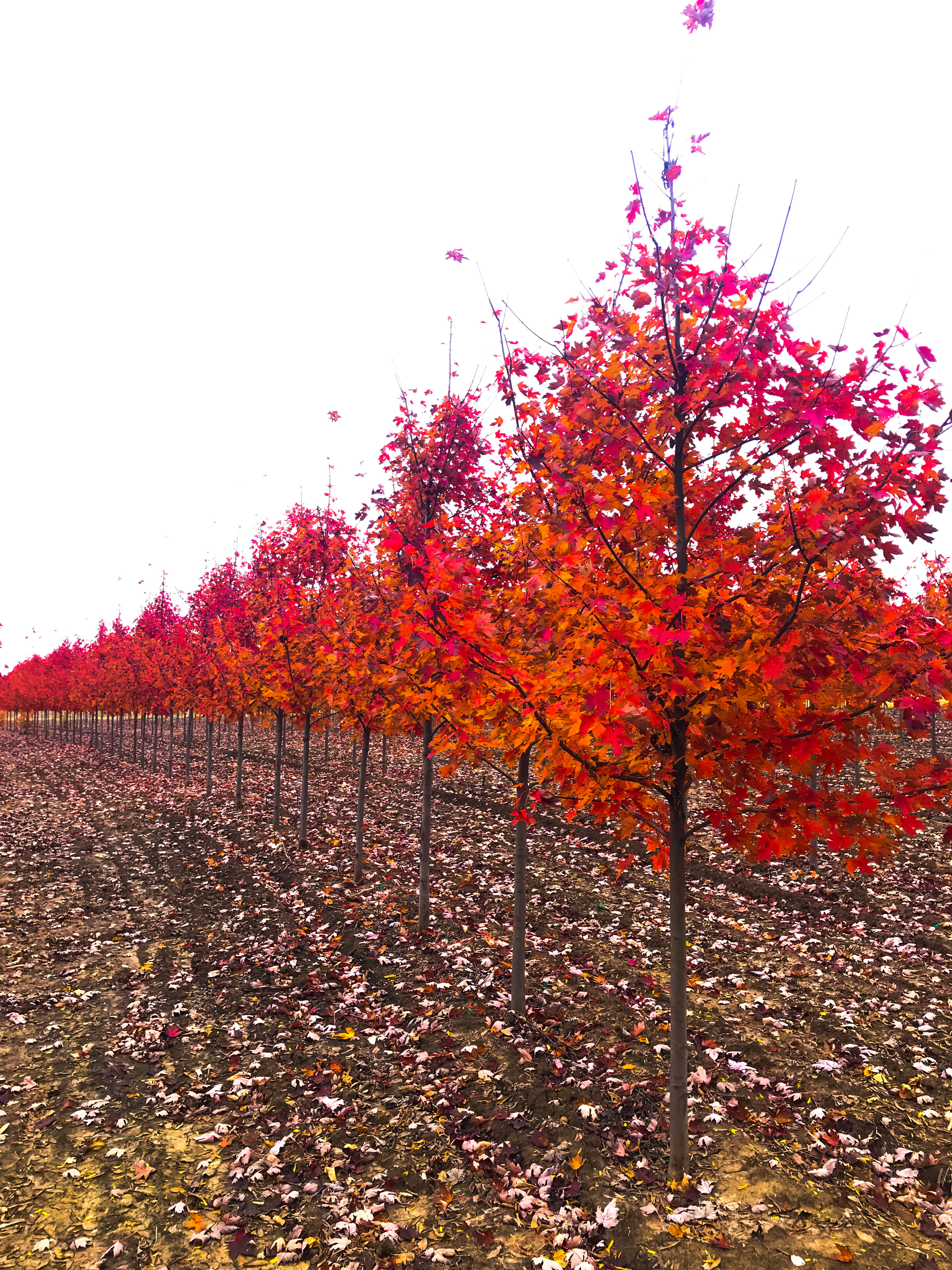We have a growing facility in Ottawa, Kansas that grows all of our container materials. However, we also have over 600 acres of field trees in Willow Springs, just south of Lawrence. Our tree farm is run a little differently than our container facility. Today’s blog will cover our tree farm, highlight some trees, and explain the ins and outs of the operation.
Loma Vista Nursery’s Tree Farm
Our in-ground tree facility grows just that: trees. We have a team of fifteen people led by out tree expert, Manuel. Most of the trees we do not grow from seeds. Instead, we choose to buy in liners and plant them in the ground. When the trees are young, our team’s job is to grow the trees, weed between rows, prune branches and shape the limps, and stake the trees. Our trees are staked when young because it helps promote a strong central leader and protects them from weather damage. Once the trees are big and strong enough, we take off the stake. We measure the trees either by their height or their caliper (how thick their trunk is). Once the trees are full grown and sold, our tree farm team uses a tree spade to dig out the tree. The spade chops off up to 90 percent of a tree’s roots, and then our team wraps the root ball in burlap. These types of trees are also often referred to as ‘ball and burlap’ trees or B&B trees because of this. Then, we ship out the trees on flatbed and reefer trucks to our customers.

Overhead shot of some of our pine and spruce trees.
The Ground
We chose to put the tree facility in Willow Springs, Kansas because of the soil. Before we bought the property, the land was used to farm crops on, and year after year, the soil yielded superior crops.The soil there is primarily loam with a little bit of clay. This soil type is the most adaptable to other soil types, so when our trees are shipped around the country, they have an extremely high success rate of surviving when they go into the ground. We do a few special things to our ground that other tree facilities do not always do.
1. Rest the ground: After we dig up our trees, we let the ground rest and plant cover crops before we plants more trees there. The cover crops enrich the ground and put back nutrients that trees need in the soil to grow strong.

Autumn Blaze Maples
2. Terrace: We terraced our facility in order to help direct the water. Our tree farm is not irrigated. We solely rely on what mother nature gives us to grow our trees. The terracing helps direct water away from the trees if we get too much rain.
3. Clean cultivate: When we say we clean cultivate our trees, we mean that we do not allow for any other crops or weeds to grow underneath the trees. This practice improves disease and pest control for us to grow the healthiest trees.
Spring and Fall Digging
Unlike container plants, we can only sell and dig trees two times of year: fall and spring. Fall is one of the best times to dig trees because they are transferring their energy from their branches and roots to their trunk to store for the winter. When we dig the trees out of the ground with our tree spade, we cut off up to ninety percent of the original roots. Most trees will go into shock if they are dug in the summer because they are actively using their roots. Not all trees can be dug in the fall though. Trees like oaks take all winter to slowly store their energy in their trunks.
Spring is the other good time to dig trees. The trees have not quite woken up from their winter slumber, and the ground is beginning to warm up. The trees will not go into shock when their roots are cut off, and they will not be planted in a harsh environment like winter provides. Because spring and fall are the two times we are able to dig trees, we only sell the trees during that time period. Once we dig the tree, we immediately get it to the customer in no more than two weeks because the longer a tree is out of the ground, the less likely it will survive.

Our Autumn Blaze Maples in the Fall
Types of Trees
We primarily focus on shade trees and upright evergreens in our tree farm. Most of our ornamental and fruit trees, minus some crabapples and pears, are grown in our pot-in-pot tree production on our container farm in Ottawa. For shade trees, we grow maple, serviceberry, river birch, hornbeam, redbud, Kentucky, honeylocust, tulip, Sweetbay magnolia, crabapple, pear, oak, Ivory Silk lilac, elm, linden, and zelkova trees. For evergreens, we grow upright juniper, pine, spruce, bald cypress, and arborvitae. If you are interested in buying our trees or just want to learn more about our in-ground tree facility, be sure to check out our Field Grown Tree Page. If you want to see some of our current field trees available, check out our Flickr Album.

Green Giant Arborvitae
Learn More About Plants From Us!
We may be a wholesale grower, but our staff are experts in the field. What’s more, is we love helping people learn more and understand more about plants. We grow healthy plants, and we want our plants (and any plants really) to be successful in the landscapes they are planted in. Feel free to email us at sales@lomavistanursery.com or call us at (785) 229-7200 if you ever have plant-related questions.
Connect with us!
Stay up-to-date on our plant recommendations, growing tips, and more by following us on social media.
